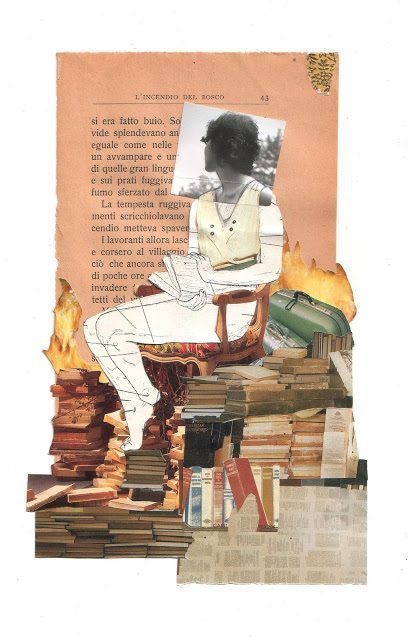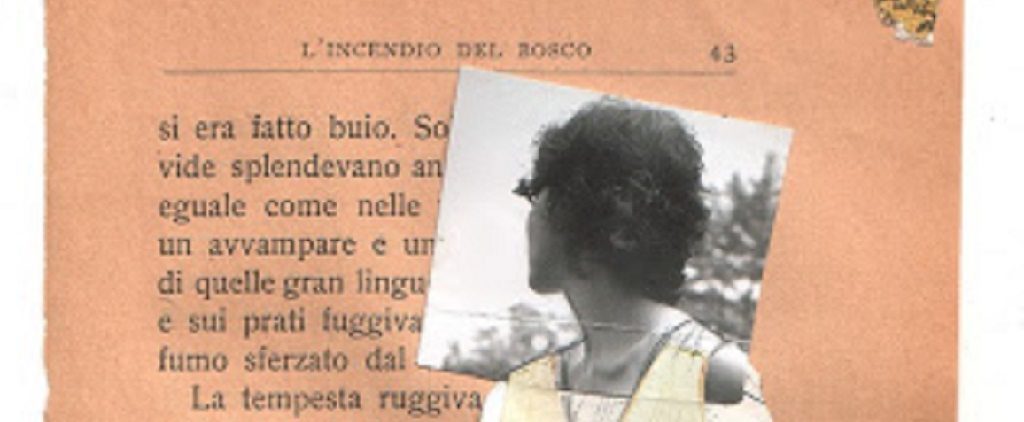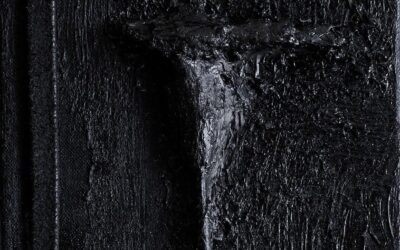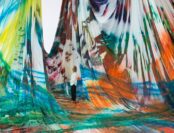[dropcap style=”font-size:100px; color:#992211;”]L[/dropcap]illianna Pereira’s collages, choice of found images, and the way in which she assembles materials is both visually stimulating and thought provoking.
One particular collage, entitled The Circular Ruins, jumps out instantly. Periera’s pictures of stacked books frame a central figure: the silhouette of a woman with an open book in her lap. In taking a closer look, however, there are details that would be missed otherwise. The piece’s small size forces the viewer to inspect its components and study the ways in which they have been manipulated. Had I simply glanced at the work, I would not have noticed the flames nor the luggage that Pereira strategically placed behind the books. Both these objects symbolize key elements in George Louis Borges’ short story “The Circular Ruins,” which Pereira borrowed to title this work, and ultimately give light to Periera’s intended message.
strategically placed behind the books. Both these objects symbolize key elements in George Louis Borges’ short story “The Circular Ruins,” which Pereira borrowed to title this work, and ultimately give light to Periera’s intended message.
A central theme in Borges’ “The Circular Ruins” concerns the circular nature of life and an understanding that the human experience is not necessarily unique but rather similar for all, from generation to generation. This idea – that each and every individual is reliant upon his or her predecessors’ experience – recurs in much of Borges’ work. In his preface to his first volume of verse, Fervor de Buenos Aires (1923), he claimed, “If the pages of this book offer some felicitous line or other, may the reader pardon me the discourtesy of having claimed it first. Our inconsequential selves differ but little: the circumstances that you are the reader and I the writer of these exercises is accidental and irrelevant.” Borges did not believe his work to be unique. Rather, he felt it the direct result of his predecessors.
Not only does Pereira pay homage to Borges by borrowing the title of one of his stories, but she uses her canvas to further Borges’ point. By manipulating images that had been created initially by others – images from magazines, text from an old Italian book, a cutout from a black and white photograph – she demonstrates just how the reliance upon others’ work is central to the inspiration and creation of new works.




















